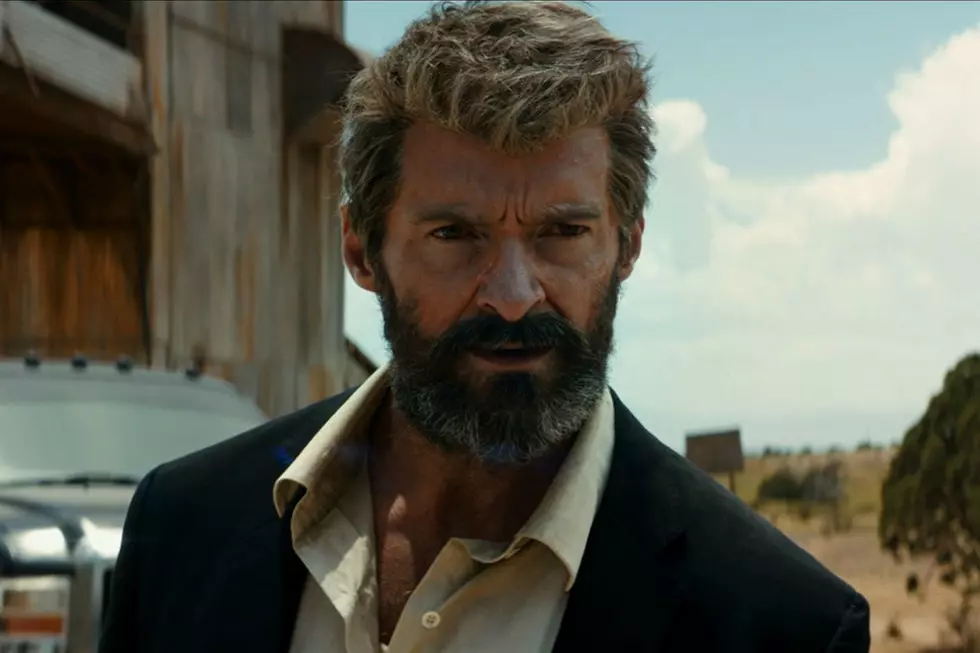
Hot Ink — Liberty Comics 2, Hector Plasm: Totentanz, Deadpool 900
ComicsAlliance's Chris Murphy reviews the biggest -- and best -- comic books hitting the shelves this week.
SO THAT'S TWO FIRST AMENDMENT COMICS TO MATCH THE SEVERAL HUNDRED SECOND AMENDMENT COMICS -- Liberty Comics 2
Since the rise of the American comics industry in the 1930s, there has been a long and proud tradition of respecting the right to free speech.
 Wait, wait, no, not free speech. Like that, but the opposite. Censorship. Right, that's the word. Having been branded as a medium for the entertainment of children only, comics became the focus of a government investigation over the concern that they were instilling questionable morals in America's youth. Thankfully, the investigation was handled in a calm, well-reasoned manner and the restrictions that followed were neither draconian measures that stunted the industry's growth nor petty maneuvering designed by some companies to crush their competition.Wait, wait, no, sorry again. That's slightly incorrect in so far as it is entirely inaccurate. Dating back to the time a few elderly (i.e., late twenty-something) cavemen stared at a bunch of teenagers sitting around a fire telling stories and said to each other "You know, when I was their age we just poked the fire with sticks. Something's wrong with kids today," every single emerging art form has become a scapegoat for one generation to use as an excuse to blame the next.
Wait, wait, no, not free speech. Like that, but the opposite. Censorship. Right, that's the word. Having been branded as a medium for the entertainment of children only, comics became the focus of a government investigation over the concern that they were instilling questionable morals in America's youth. Thankfully, the investigation was handled in a calm, well-reasoned manner and the restrictions that followed were neither draconian measures that stunted the industry's growth nor petty maneuvering designed by some companies to crush their competition.Wait, wait, no, sorry again. That's slightly incorrect in so far as it is entirely inaccurate. Dating back to the time a few elderly (i.e., late twenty-something) cavemen stared at a bunch of teenagers sitting around a fire telling stories and said to each other "You know, when I was their age we just poked the fire with sticks. Something's wrong with kids today," every single emerging art form has become a scapegoat for one generation to use as an excuse to blame the next.
Simply because the older group happened to never grow up with a particular medium of entertainment, they assume it's responsible for all the degenerate problems of the young people a few decades away from taking their jobs and responsibilities and pushing them into retirement homes. Before comics there were movies, after comics there were video games. Some day we'll be grumbling about our kids' immersive virtual reality worlds or personal robot acting troupes. But right now we have comics, and they're still in a precarious position. Comics readers have grown old enough that the medium's no longer as looked down upon as it once was. The Comics Code has been for all practical purposes powerless for some time now, and continues to die the slow, lingering and hopefully painful death it so rightfully deserves.
But comics still bear the stigma of being "just for kids" entertainment, and anytime they present material that edges outside the boundaries of what some self-appointed social guardians deem appropriate there remains a risk of trouble. The big companies can still weather the storm, but for individual creators and, more frequently, comic book shop owners legal problems can be a serious if not insurmountable setback.
The Comic Book Legal Defense Fund is on the frontline in that fight, out to protect anyone whose free speech rights in the industry are challenged. This week the CBLDF and Image Comics are releasing their second "Liberty Comics" anthology, a collection of short works on the theme of First Amendment rights by an all-star lineup of creators including Neil Gaiman, Jim Lee, Brian Wood, Paul Pope and Ben Templesmith. Free speech is a cause that's of great importance to me, and I'm a fervent supporter of what the CBLDF does. So I came into this book really wanting to like "Liberty Comics."
But I'm also a words-first kind of guy, and I have to say that while the artwork to be found here was excellent, the stories weren't up to the same level of quality. There are exceptions. The preview of Ben McCool and Ben Templesmith's upcoming series "Choker" was a great introduction to a promising new comic. Ray Fawkes, Cameron Stewart and Dan Jackson's "Apocalipstix" short story was the most amusing take on censorship. But I can't honestly recommend the content of "Liberty Comics" 2 as strongly as I can recommend supporting the CBLDF and what it stands for.
REALLY, WHY SHOULD WE HAVE EXPECTED THE NONSENSE TO STOP AT MATH? -- Deadpool 900
 Many big name superhero books are celebrating milestone issues this year with extra-long releases made up of several shorter stories. But with Deadpool 900, Marvel's topping its previous releases in both numerical value and inaccuracy. Technically, one could point out that there have not been 899 previous issues of Deadpool. But if one is the type who enjoys pointing out mathematic technicalities, Deadpool may not be one's comic reading of choice. And so Wade Wilson is here to strike a blow against aliens, street performers, psychologists, the travel industry, popular prime time television series, people who will be trying to keep their comics in proper order ten years from now, and anyone else who happens to wander into his path of destruction.
Many big name superhero books are celebrating milestone issues this year with extra-long releases made up of several shorter stories. But with Deadpool 900, Marvel's topping its previous releases in both numerical value and inaccuracy. Technically, one could point out that there have not been 899 previous issues of Deadpool. But if one is the type who enjoys pointing out mathematic technicalities, Deadpool may not be one's comic reading of choice. And so Wade Wilson is here to strike a blow against aliens, street performers, psychologists, the travel industry, popular prime time television series, people who will be trying to keep their comics in proper order ten years from now, and anyone else who happens to wander into his path of destruction.
Like any such collection there are going to be hits and misses, but in this case the book's accuracy rate is worthy of an internationally feared gun for hire. Best of the group is an eight-page story by writer Fred Van Lente and artist Dalibor Talajic in which Deadpool fights a trio of mimes who possess the ability to shape reality with their thoughts, and in which no dialogue occurs until the last page. It really needs to be seen firsthand.
But a close second is a longer story by Charlie Huston and artist Kyle Baker which features Deadpool questioning whether he's getting tired of the same action packed lifestyle, and features the fastest moving, funniest dialogue of the issue. Not to mention it includes back-to-back panels of Deadpool fighting ninja-spiders and vampire-werewolves, and somehow neither of these is the best panel of the work. Also worth noting are a story in which Deadpool plays ping pong against Doctor Octopus and another that gives him a supporting role in a thinly veiled parody of CSI. And even the ones I'm not calling out here have one or two great moments to be found.
Now, of course, it should go without saying that if you've found nothing to like in any of the previous eight hundred and ninety nine real and fraudulent issues of Deadpool, this one's unlikely to change your mind. But if you like the character he works particularly well in an anthology format. There's something about violent absurdist humor that exponentially improves when presented in short bursts from different creative perspectives.
PROVIDED THAT THE NORMAL GUYS YOU WOULD BE GOING TO CALL ARE UNAVAILABLE, WHO YOU GONNA CALL? Hector Plasm: Totentanz
 "Hector Plasm: Totentanz" provides a two-page summary of its hero's backstory, drawn in the style of Edward Gorey, that contains a panel in which Plasm faces off with a demon in a classic 19th century bare knuckle boxing fisticuffs showdown pose. The demon has sideburns and a mustache. I'm telling you this first because that's all I needed to get on board with this character, so if you're anything like me you now want to read this book.
"Hector Plasm: Totentanz" provides a two-page summary of its hero's backstory, drawn in the style of Edward Gorey, that contains a panel in which Plasm faces off with a demon in a classic 19th century bare knuckle boxing fisticuffs showdown pose. The demon has sideburns and a mustache. I'm telling you this first because that's all I needed to get on board with this character, so if you're anything like me you now want to read this book.
If you're not familiar with the character, Hector's the creation of writer Benito Cereno and artist Nate Bellegarde. He has the ability to communicate with the spirits of the dead and is something of a supernatural problem solver as a result. Totentanz is a collection of several Halloween related stories that have been previously released on the web as well as one as yet unreleased tale. That one's the clear highlight of the book, but I'l
l get to it later.
There are two longer standard format stories here, each drawing its inspiration from a particular culture's take on a holiday celebrating the souls of the departed and the supernatural. Ever been curious about the Manx celebration of Hop-tu-Naa? No? Because you've never heard of it and didn't know that Manx is the term for "from the Isle of Man"? Well, then this should be both entertaining and educational for you. Also on hand is a story featuring the more familiar Day of the Dead. It's no less educational, though, as Hector both fights the supernatural and teaches you, the reader, the proper recipe for Pan de Muerto. Which is the baked good people eat for Day of the Dead because apparently you're allowed beautifully designed skeleton art or delicious candy, but not both.
But the real reason to pick up "Hector Plasm: Totentanz" is its adaptation of the Danse Macabre, specifically the 19th century composition for piano, voice and violin by Camille Saint-Saens and Henri Cazalis. The story of Death calling all to his dance is presented as though it were a silent film, employing black and white panels with no text interspersed with text-only placard panels (in the original French), the story on its own is beautiful. But the real ambition in its creation is that the story is designed to be read along with the proper musical accompaniment.
Cereno provides an in-depth explanation of how to properly mix the comic with the original music at the book's end. There are plans in the works to put up an animatic of the images with the music matched up correctly on the comic's website. An animatic, for those of you unfamiliar with the term, is what motion comics were called before someone invented the term motion comic. But until that's up it's not difficult to track down a version of the piece to listen to yourself.
Add in a few guest pages, including a Hector Plasm story by "Pictures for Sad Children" creator John Campbell, and the end result is that "Totentanz" is a wonderful collection to set the right mood for Halloween. If what you love about Halloween isn't the fear, but is rather the celebration of the mysteries of the supernatural, give this one a look.
More From ComicsAlliance









